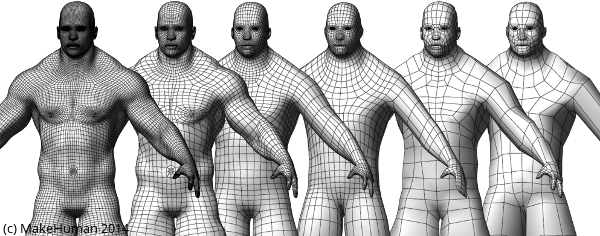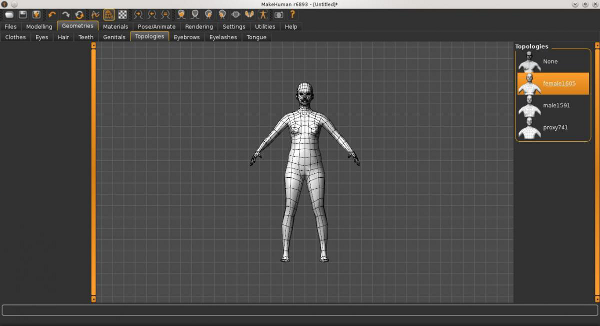Difference between revisions of "Documentation:Alternative topologies"
From MakeHuman Community Wiki
(Created page with "Makehuman provides a group of alternative topologies which replace the base mesh and are designed for special purposes. These are useful for various applications such as simul...") |
|||
| Line 1: | Line 1: | ||
Makehuman provides a group of alternative topologies which replace the base mesh and are designed for special purposes. These are useful for various applications such as simulation (E.g. a car crash computer simulator), games and so on. | Makehuman provides a group of alternative topologies which replace the base mesh and are designed for special purposes. These are useful for various applications such as simulation (E.g. a car crash computer simulator), games and so on. | ||
| − | + | [[File:topologies_0.png]] | |
In order to use the alternative topologies provided by MakeHuman; go to Geometries -> Topologies. | In order to use the alternative topologies provided by MakeHuman; go to Geometries -> Topologies. | ||
| Line 8: | Line 8: | ||
For illustration purposes we show the wireframe/mesh view of female1605 with 1605 vertices in the figure below. | For illustration purposes we show the wireframe/mesh view of female1605 with 1605 vertices in the figure below. | ||
| − | + | [[File:Proxies1.png]] | |
Latest revision as of 17:21, 5 July 2016
Makehuman provides a group of alternative topologies which replace the base mesh and are designed for special purposes. These are useful for various applications such as simulation (E.g. a car crash computer simulator), games and so on.
In order to use the alternative topologies provided by MakeHuman; go to Geometries -> Topologies. For alternative topologies we follow a specific naming convention having the structureNameVertex-countE.g. proxy741 is a alternative topology named proxy with 741 vertices, female1605 is an alternative topology designed for females with 1605 vertices in the mesh.
For illustration purposes we show the wireframe/mesh view of female1605 with 1605 vertices in the figure below.

